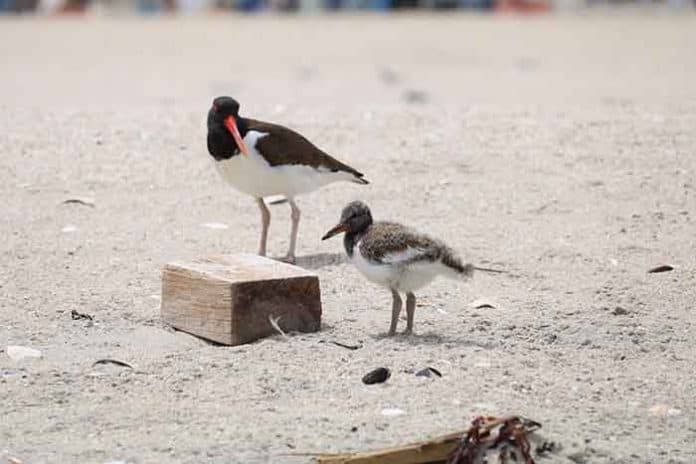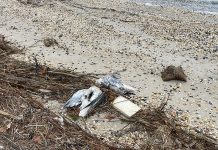
POINT PLEASANT BEACH – A few endangered species are making a home for themselves on the Jersey Shore, with the help of Jenkinson’s Aquarium and the NJ Division of Fish and Wildlife and Conserve Wildlife Foundation.
In Point Pleasant Beach, just north of Jenkinson’s, a group of Least Terns, Black Skimmers, and American Oystercatchers are staking their claim on a small area of the beach, now monitored by the Fish and Wildlife Foundation.
It was discovered back in May that a pair of American Oystercatchers, a species of special concern here in New Jersey, nested on the beach and laid three eggs. The pair later welcomed three chicks to the world. According to Jenkinson’s, the parents and hatchlings are doing well and the chicks should be spreading their wings soon enough.
Following the American Oystercatchers, a colony of the endangered species Least Terns started nesting in the same area provided by NJ Division of Fish and Wildlife. A much larger group, more than 80 pairs, of terns has built nests, laid eggs, and is welcoming chicks.
Another endangered species, Black Skimmers, followed suit by nesting in the spot. Officials expect they will soon lay three to six chicken-sized eggs. Black Skimmers are about the size of a crow, and are easily identified by their long black-tipped red bill. They are known to nest near Least Terns as they rely on their aggressive behavior for added protection.
The area in which these species reside has been roped off by officials from the Fish and Wildlife Foundation. In an effort to preserve these species and protect their habitat, officials ask beachgoers to:
- Stay out of these areas – the birds are easily disturbed by our activities on the beach
- Leave dogs at home – dogs are not allowed on the beach here and if unattended could chase and even kill the nesting birds
- Give the birds some space – enjoy beach activities away from the fenced in area
- Take your trash with you – always a good rule to follow, but especially critical when predator species could be drawn to the area by trash that has been left behind.
For more information about these species, visit conservewildlifenj.org and njfishandwildlife.com.







